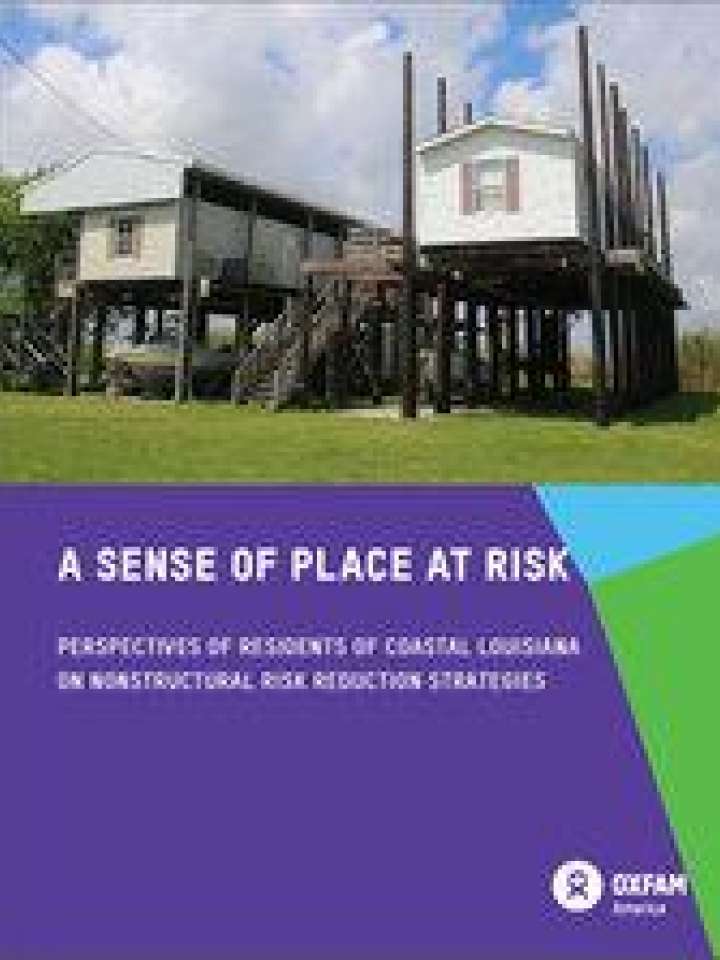A sense of place at risk: perspectives of residents of coastal Louisiana on nonstructural risk reduction strategies
Flooding and land loss in southern Louisiana, which accounts for 90 percent of total wetlands land loss in the lower 48 states, threaten not only livelihoods, but the physical existence of some communities. Rising seas, disappearing land, and lost livelihoods are forcing many families to migrate away from the coast, and leaving others to take measures to keep their homes safe. Coastal restoration is viewed not only as essential to retaining land, and even reversing some land loss, but also as the basis for a new sector in the regional economy, with the potential to generate tens of thousands of new jobs.
The purpose of this study is to document and present the views of people in the parishes most at risk -views that have rarely been captured, including their views on current policy proposals. With nonstructural issues identified as a major focus of the 2017 version of the Coastal Master Plan, there is an opportunity to further delineate these issues and recommend policy changes over the next two years. Three parishes (Terrebonne, Lafourche, and Plaquemines) are at the epicenter of coastal land loss and other critical changes in the environment. How residents understand and respond to the challenges of sea level rise and climate change will provide possible strategies and recommendations for local and state policy choices.
This study focuses on nonstructural mitigation measures, instead of the more commonly discussed and researched structural flood control measures. Coastal restoration investments often address these flood control measures, primarily levee building and restoring coastal marshland. Many communities —particularly those that will not be adequately protected by structural measures—will rely on nonstructural measures. Louisiana's Comprehensive Master Plan for a Sustainable Coast recognizes three types of physical nonstructural measures: flood-proofing, elevation, and, in some cases, acquisition of property that cannot be protected. Programmatic nonstructural strategies include building codes, land use planning, regulation, hazard mitigation planning, and public education. Some of these mitigation efforts occur through public programs in a concerted manner, and others occur on an individual level with private resources.
Explore further
